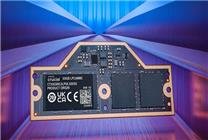Google Pixel Watch 3 Study: A Step Towards Health Monitoring
Summary
- Google is recruiting up to 10,000 users of the Pixel Watch 3 to conduct research aimed at improving heart health.
- Participants will wear the watch for up to 180 days, providing valuable data to detect high blood pressure.
- Google has also launched a secondary study called "Abnormal Trend Detection," alerting users to any irregular health metrics.
In a groundbreaking initiative, Google is expanding its research efforts focused on heart health by recruiting up to 10,000 users of the Pixel Watch 3. The objective is to advance research that assists users in proactively managing their cardiovascular health. This is crucial as chronic high blood pressure can lead to severe health issues, including heart disease and stroke.
Recruitment Details and Eligibility
Participation in this study will be available exclusively to U.S. citizens aged 22 and older. Interested individuals will need to fill out an English-language questionnaire to determine their eligibility. This effort is specifically tailored for Pixel Watch 3 users, and those with previous models will not be considered. Participants will be required to wear the Pixel Watch 3 for a period of up to 180 days, during which user data will be collected to assess indicators of high blood pressure.
Research Initiatives
Alongside this recruitment, Google has launched another significant study named "Abnormal Trend Detection." This study aims to provide users with real-time alerts whenever their health metrics display irregularities. By actively monitoring health indicators, Google seeks to foster a more proactive approach to personal health management.
Participant Incentives
Upon completion of the Fitbit Hypertension Study, participants may receive a special blood pressure monitor that they will wear alongside their Pixel Watch 3 for a continuous 24-hour period. As a token of appreciation, participants will also be rewarded with a $25 gift card, while others who choose to opt-in but do not participate in the study will not receive compensation.
Impact on Device Performance
It’s essential to note that activating the high blood pressure research feature may result in a temporary reduction in battery life. Despite this, users can expect their watches to remain functional throughout the day. The Pixel Watch 3’s sensors will work diligently in the background to monitor potential high blood pressure warnings, although users should be aware that the device does not provide medical advice or health feedback based on the collected data. Instead, the information will primarily be utilized for research purposes.
Future Prospects
Google envisions utilizing the data gathered from these studies to enable early detection of chronic hypertension risks. Earlier this year, similar features were introduced by the Apple Watch, which claimed to enhance user health monitoring after analyzing data from over 100,000 participants.
The "Abnormal Trend Detection" initiative further enhances the user experience by sending notifications directly to participants when any abnormal health metrics are identified. Alongside alerts, users will receive documentation requests to identify possible causes and symptoms, along with recommendations for rest and recovery.
Innovations in Health Monitoring
Moreover, Google is testing a Fitbit personal health coach designed to leverage watch data, offering insights into recent health trends and addressing user inquiries related to fitness and wellness. These studies will not only benefit users immediately but will also be instrumental in refining the features of future health-tracking technologies, particularly in explaining potential underlying causes of concerning health data, such as high blood pressure.
Conclusion
As Google delves deeper into health technology, the Pixel Watch 3 initiative represents a vital stride toward enhanced heart health monitoring. By fostering community participation and employing advanced technology, Google aims to transform how we understand and manage our health, underscoring the significance of proactive monitoring and detection in personal well-being.
The intersection of technology and health science promises numerous possibilities for improved health outcomes, paving the way for more innovative solutions in the future.







